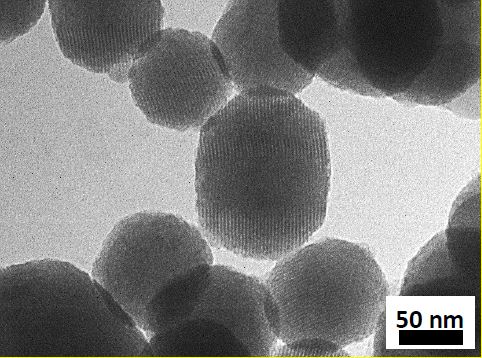Peptide‐Capped Mesoporous Nanoparticles: Toward a more Efficient Internalization of Alendronate.
Osteoporosis is an illness which appears when the osteoblast/osteoclast activities are unbalanced taking place bone resorption (caused by osteoclasts) in higher extension than bone formation (induced by osteoblasts). Alendronate is one of the most used drugs for osteoporosis treatment despite its scarce bioavailability. In an attempt to improve it, gated mesoporous silica nanoparticles, for the controlled release of alendronate, have been synthesized and characterized. These hybrid nanoparticles include labelled alendronate inside the porous, those porous are capped with a peptide designed to be selectively cleaved by cathepsin K enzyme (overexpressed in osteoclasts).
Two CIBER-BBN units of the ICTS NANBIOSIS were implied in the research: the peptide was prepared by U3 Synthesis of Peptides Unit and substances were characterized at U26 NMR: Biomedical Applications II Unit at University of Valencia.
The nanoparticles were internalized by RAW 264.7 macrophages (which could differentiate in osteoclasts) and were able to release its entrapped cargo in the presence of cathepsin K added in the macrophage lysates. From the set with aminopropyl functionalized silica, loaded with nitrobenzofurazan labelled alendronate and capped with the same peptide, 4.2% of the total alendronate amount in contact with the cells is liberated inside them and could produce its therapeutic effect.
Article of reference:
Elena Añón, Ana M. Costero, Pedro Amorós, Jamal El Haskouri, Ramón Martínez‐Mánez, Margarita Parra, Salvador Gil, Pablo Gaviña, M. Carmen Terencio, María Alfonso. Peptide-Capped. Mesoporous Nanoparticles: Toward a more Efficient Internalization of Alendronate. Chemistry Europe, March 2020









